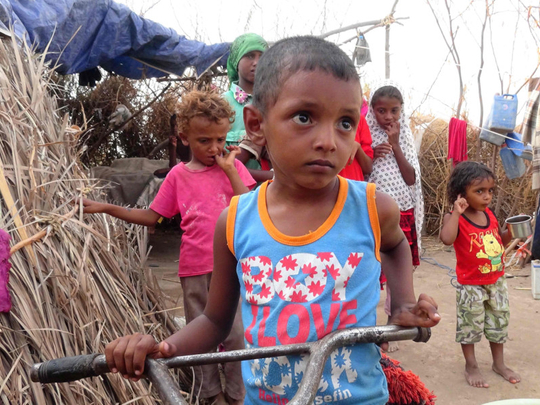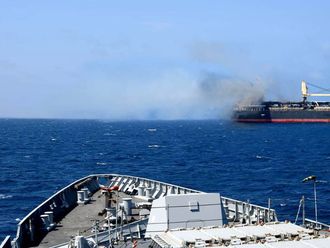
Khokha - For Imad and his sister Alia, life will never be the same after their father was killed by a landmine and they had to leave their endangered home in Yemen’s western Hodeida province.
With their house surrounded by the deadly munitions, the two children and their mother, left Al Dunain village and headed for shelter at the Al Waara camp in the Khokha district, some 30km from the town of Hays.
Withdrawing Iran-backed Al Houthi rebels had dotted the area with mines, their mother Fethiyeh Fartout said.
And it was while her husband made his way to market that he was killed on a road “riddled with landmines”.
“The Al Houthis then told us to either leave the house or risk being killed,” she told AFP.
The family is just one of millions caught up in a dragging war in which Al Houthis have been fighting for more than three years against the Yemeni government, which is backed by a Saudi-led military coalition.
The Al Houthis have been accused of widespread and indiscriminate use of landmines.
Indiscriminate use of landmines is deemed a war crime by international bodies.
For Fartout and her children there is no way to return home, even if they tried, said her father Jamal Fartout.
“The Al Houthis planted landmines everywhere, and their explosives destroyed the roads,” he told AFP.
“All the roads leading back to our home are lined with explosives.”
Human Rights Watch said in June that landmines in Yemen were hindering aid access and entrapping people.
“Al Houthi forces have repeatedly laid antipersonnel, anti-vehicle and improvised mines as they withdrew from areas in Aden, Taiz, Marib and, more recently, along Yemen’s western coast,” the HRW said.
Landmines “will pose a threat to civilians long after the conflict ends,” it warned.
In July, the Washington Institute said that, while landmines have plagued Yemen for decades amid different conflicts, the Al Houthis are using them today “at an astonishingly high rate.”
While exact numbers are “notoriously difficult to verify”, the institute said one “Yemeni de-mining official claims the Al Houthis have laid 500,000 mines since 2015” while de-mining teams “have reportedly removed 300,000 landmines”.
The non-governmental Landmine and Cluster Munition Monitor recorded more than 2,100 casualties in Yemen from landmines in 2016.
“I asked the Al Houthis, ‘where can we go when the breadwinner of the family was killed by a landmine?’,” Fartout said.
Hundreds of people now live in make-shift tents in Al Waara - partly funded by the UAE, a key player in the Saudi-led coalition.
While dozens of children, some barefoot, run around the camp, one boy sits in a wheelchair - his leg in a cast. He, too, was a victim of a landmine.
According to the Norwegian Refugee Council (NRC), sustained fighting in Hays has killed civilians, destroyed infrastructure and driven mass displacement for more than 10 months.
By March 2018, an estimated 12,000 people had been displaced from the districts of Hays and Al Jarahi, some 25 kilometres from Hays.
In June, Saudi Arabia launched a new project for landmine clearance in Yemen, but “landmines will remain a formidable challenge in the postwar era,” the Washington Institute added.
With millions facing starvation, the Fartout family are now among the 22 million people - three quarters of the population - in need of food aid.
The Emirates Red Crescent (ERC) delivers food and aid to the Al Waara camp approximately every three weeks, said Saeed Al Kaabi, director of UAE’s humanitarian operations in Yemen.
Each tent receives a package of food, including rice, pasta, beans, tuna, salt and sugar, he said.












